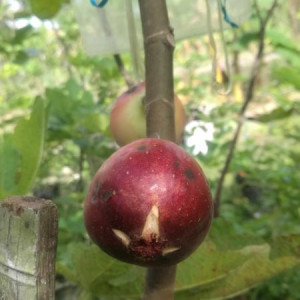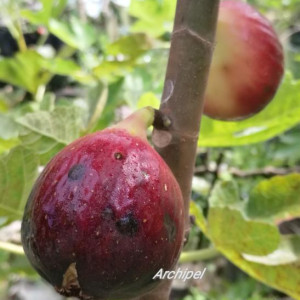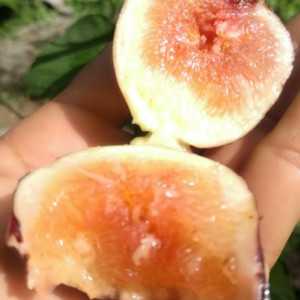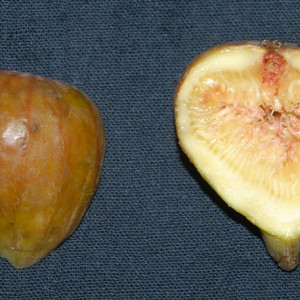This site contains affiliate links for which I may be compensated.
Archipel
Archipel Information
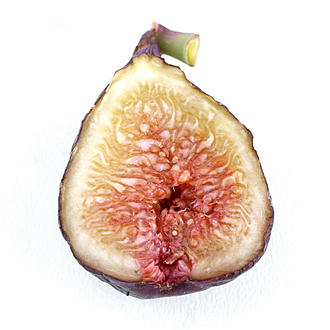

-
Possible Synonyms / AKA:
DFIC 7, Hardy Prolific, Neveralla, Osborne, Rust, Osborn Prolific, De L'Archipel, Ronde Noire, Figue Grise,
-
Introduced By:
-
Origin:
-
Main Flavor Group:
Honey- offers a delicate and smooth sweetness with a warm, golden richness. It brings a soft, floral depth to the flavor, creating a naturally sweet and mellow experience. -
Family Group:
-
Fig Type:
Common - Self fertile and will grow anywhere conditions are suitable -
Cold Hardy:
N/A -
Container Variety:
N/A -
Easy Rooting:
N/A -
Main Season:
mid -
Availability:
N/A -
Breba Crop:
Yes -
Seed Crunch:
N/A -
Eye:
open -
Skin Toughness:
N/A -
Fruit Size:
Medium to large -
Rain Resistance:
N/A -
Tree Vigor:
N/A -
External Links:
http://www.ars-grin.gov/cgi-bin/npgs/acc/display.pl?1000288
http://figs4fun.com/Thumbnail_Archipel.html
http://seattlegardenfruit.blogspot.com/2016/03/fig-of-week-18-osborne-prolific.html
Description
This cultivar produces a medium-large fruit with reddish, brown skin and light-colored flesh. The fruit is sweet with few seeds. The eye is partially closed. Osborn Prolific is reported to perform better in cooler climates. Fruit ripening is August, and the fruit is best eaten fresh.
Archipel (Osborn) was tested at the Amador, Tulare, and Paso Robles Experiment Stations in California between 1889 and 1896, and was reported to produce high-quality figs in abundance. Individual trees have been found in the foothills of Merced and Mariposa counties in various localities near San Francisco Bay, and in southern California.
Trees are upright in habit of growth; terminal dormant buds are green in color. Leaves above medium, 3- to 5-lobed, the basal lobe sometimes Auricled ; upper sinuses of medium depth and width, lower sinuses shallow, basal sinus sometimes narrow and almost closed, but generally open, forming a cordate base; margins coarsely crenate; surface somewhat glossy. The following description is from fruit produced at Riverside since 1930.
Breba crop good. Figs above medium, pyriform, somewhat oblique; neck prominent, often elongated; stalk short; ribs not prominent, mostly evident as dark- colored bands; eye medium, open, scales reddish brown; Skin Cracking or checking at full maturity; color bronze, tinged with violet; bloom delicate; meat white; pulp cottony white, tinged with pink; texture spongy or mealy; flavor somewhat strong; quality fair. Of doubtful value, on account of unattractive color and poor flavor. (2)
The [following] names were cited as synonyms in Fig Varieties: Hilgardia, Vol. 23, No. 11, 1955, p. 414, by Condit: DE l'Archipel, Osborn, Figue Grise, Osborn's Prolific, Ronde Noire, Hardy Prolific. Appears to be the same as the 2 "Osborn" accessions in the Figs 4 Fun Collection.
Condit Monograph:
Archipel (syns. DE l’Archipel, Osborn, Osborn’s Prolific, Hardy Prolific, Figue Grisé, Ronde Noire?). In 1854, Audibert Frères described a variety of fig under the name Archipel, having a single crop of reddish-brown fruits with pale-yellow pulp, maturing in September. Other French authors apparently ignored the variety designated as Archipel. Hogg (1866) and Eisen (1888) described it as DE l’Archipel. The later account by Eisen (1901) is based on fruit produced by the Archipel that was introduced from England in the Chiswick collection, and established at Niles, California, as P.I. No. 18,835. This description, and that of Barron (1891), fit closely the fruit characters of the variety known as Osborn’s Prolific. Furthermore, in the collection of varieties at Riverside, Archipel, obtained from Angleton, Texas, as P.I. No. 18,835, has proved to be identical with Osborn. P.I. No. 18,879 of the Chiswick collection, labeled Hardy Prolific, was also identical with Archipel. The name Archipel is, therefore, given priority. P.I. Nos. 60,493 and 69,014, introduced from France as Figue Grisé, are both the same as Archipel at Riverside. The same is true of Rolandine No. 102,020, from Morocco.
Osborn’s Prolific is described by S. (1878), Moore (1879), Coleman (1887b), Barron (1891), Massey (1893), Wythes (1893), Eisen (1901), Starnes and Monroe (1907), Royal Hort. Society (1916); E. A. Bunyard (1925), Cook (1925), Davis (1928), Condit (1947), and Preston (1951). According to Bunyard, this variety was introduced into England in 1878-1879 by Messrs. Osborn, of Fulham, and was designated Osborn’s Prolific on account of the productiveness of the trees. Eisen refers to an account by Hogg, but no mention of the Osborn is found in the 1866 edition of The Fruit Manual by that author. Barron and Wythes both regarded the variety as identical with Brown Turkey.
The fact that English nurseries have been confused over these two varieties is indicated by experiences with recent introductions into California. Cuttings received in 1929 as Brown Turkey produced fruit in 1933 identical with Archipel (Osborn). On the other hand, Brown Turkey, introduced under P.I. Nos. 93,275 and 95,598, bore fruit in both cases typical of that variety and entirely distinct from Archipel.
The variety Ronde Noire has proved in California tests to be identical with Osborn in some plots, and different in others. The description and illustration of Ronde Noire by Eisen (1901) fit the Archipel closely, even though he stated that it is very distinct from that variety. In the collection of figs maintained by the late Leroy Nickel at Menlo Park, the Ronde Noire and Osborn were identical. Neveralla, listed in the 1942 catalogue of Willamette Fig Gardens, Portland, Oregon, by B. R. Amend, has proved at Riverside to be identical with Archipel.
Various French growers imported Osborn from England, and issued reports on its behavior. Among these are the following Anon. (1882), Carrière (1881, 1884), B. Rivière (1907), and Reboul (1908).
Archipel (Osborn) was tested at the Amador, Tulare, and Paso Robles Experiment Stations in California between 1889 and 1896, and was reported to produce high-quality figs in abundance. Individual trees have been found in the foothills of Merced and Mariposa counties in various localities near San Francisco Bay, and in southern California.
Trees are upright in habit of growth; terminal dormant buds are green in color. Leaves above medium, 3- to 5-lobed, the basal lobe sometimes Auricled ; upper sinuses of medium depth and width, lower sinuses shallow, basal sinus sometimes narrow and almost closed, but generally open, forming a cordate base; margins coarsely crenate; surface somewhat glossy. The following description is from fruit produced at Riverside since 1930.
Breba crop good. Figs above medium, pyriform, somewhat oblique; neck prominent, often elongated; stalk short; ribs not prominent, mostly evident as dark- colored bands; eye medium, open, scales reddish brown; Skin Cracking or checking at full maturity; color bronze, tinged with violet; bloom delicate; meat white; pulp cottony white, tinged with pink; texture spongy or mealy; flavor somewhat strong; quality fair. Of doubtful value, on account of unattractive color and poor flavor.
Second-crop figs variable in size, from 2 to 2-1/2 inches long and 1-1/2 to 2 inches in diameter; average weight 58 grams; shape pyriform to turbinate, commonly oblique; neck thick, up to 3/4 inch long; stalk variable; ribs very slightly elevated, coloring more deeply than body; eye medium, open, scales light brown, scarious on margins; surface dull; bloom delicate; white flecks large, scattered, not prominent; color bronze, with violet tinge; pulp amber, almost seedless; texture mealy, inclined to be somewhat dry; flavor insipid; quality poor.
Caprified specimens of larger size; external color darker violet; pulp strawberry, seedy. Figs practically worthless in interior valleys, either dried or fresh; very much subject to spoilage. In cool, coastal climates, fruit sizes are larger, and figs are of good to excellent quality for fresh consumption.
If you'd like your banner to be shown here and throughout Fig Database, send us a message.
Photos Add Your Image
YouTube Videos
No Videos Found





